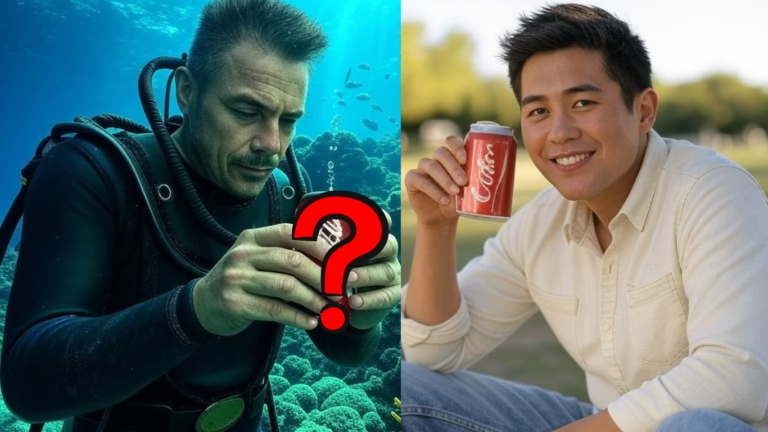

Have you ever shaken a Coke can, only to watch it spray everywhere when you pop the tab? It’s a common experience on land, but I’ve learned there’s a place where this doesn’t happen: deep underwater. Let’s delve into why this fizzy phenomenon doesn’t occur in the depths of the ocean.
The Coca Cola in Submarine Experiment
Imagine you’re with me in a submarine, cruising through the deep blue. I decide to shake a can of Coca Cola just for fun. Here’s what happens:
- No Spray: Unlike on land, when I open the can, no Coke sprays out. It’s as if the soda had forgotten how to fizz.
This isn’t just a fun trick; it’s a lesson in physics. Let me explain:
The Science Behind the Stillness of Coca Cola
- Pressure at Depth:
- At sea level, Coca Cola soda cans are under atmospheric pressure, which keeps the carbon dioxide (CO2) dissolved in the liquid. When you shake it, you’re agitating the CO2, making it want to escape when the can opens.
- But in the ocean, the pressure increases dramatically with depth. For every 33 feet (10 meters) you go down, the pressure increases by about one atmosphere. By the time you reach the ocean floor, it’s like having hundreds or thousands of atmospheres pushing down on that can.
- Carbon Dioxide Behavior:
- This high pressure keeps the CO2 dissolved within the soda, even under agitation. It’s like the CO2 is content to stay put, not eager to rush out and create bubbles.
- Visual Proof:
- There’s actually a video online where a man shakes a Coca Cola can in a submarine deep underwater, and nothing happens when he opens it. It’s a clear demonstration of pressure’s effect on carbonation.
What happens when you open soda on the ocean floor pic.twitter.com/DNZTb2x1bG
— Historic Vids (@historyinmemes) December 17, 2024
Why This Matters to Us
- Innovative Thinking: Understanding how pressure affects carbonation can inspire us in various fields, from food science to deep-sea exploration.
- Educational Insight: It’s a perfect example for me to use when I’m teaching or discussing physics and chemistry in a fun, engaging way.
Recent Posts
Lesson Learned:
- Pressure Influences Behavior: The behavior of gases under pressure can be counterintuitive but is fascinating to explore.
- Environment Matters: Different environments can dramatically alter outcomes, even for something as simple as opening a soda can.
- Curiosity Pays: Exploring the reasons behind everyday phenomena can lead to a deeper understanding of science.
Preventative Measures:
If you’re dealing with carbonated drinks:
- Avoid Shaking: On land or in normal pressure environments, don’t shake the can if you want to keep your clothes clean.
- Understand Your Environment: Be aware of how pressure changes can affect your beverages if you’re in unique conditions like underwater.
- Experiment Safely: If you’re curious about these effects, do experiments in controlled environments where you can learn without making a mess.
FAQs
Q1: Why doesn't Coke spray when opened underwater in a submarine?
The immense pressure at ocean depths keeps the carbon dioxide dissolved in the soda, preventing it from escaping even when shaken.
Q2: How does pressure affect carbonated drinks?
Higher pressure keeps CO2 in solution, reducing or eliminating the fizz when the container is opened.
Q3: Can you drink soda underwater in a submarine?
Yes, but it won’t fizz or spray as it would on land due to the increased pressure.
Q4: Is there a video showing this effect?
Yes, you can find videos online where people demonstrate this in submarines, showing no spray from carbonated drinks.
Q5: What happens if you shake a Coke can at sea level?
Shaking a Coke can at sea level agitates the CO2, leading to a spray when opened due to the release of pressure.
By exploring these quirky aspects of our world, I not only entertain myself but also share insights that make science accessible and fun. Whether you’re sipping a soda on land or in the deep sea, there’s always more to learn about the world around us.



